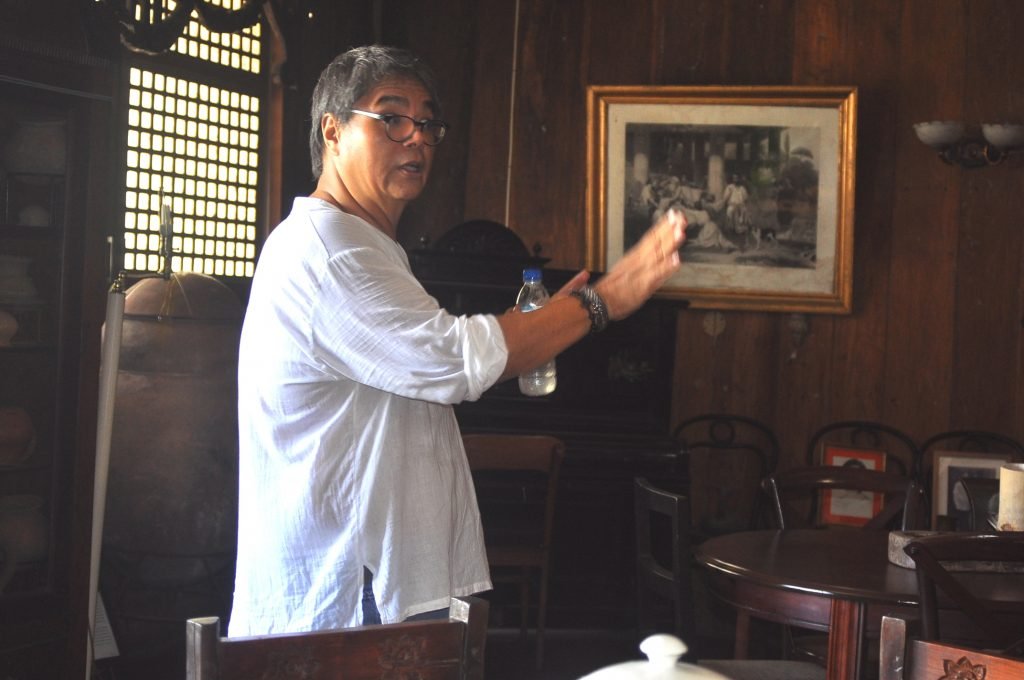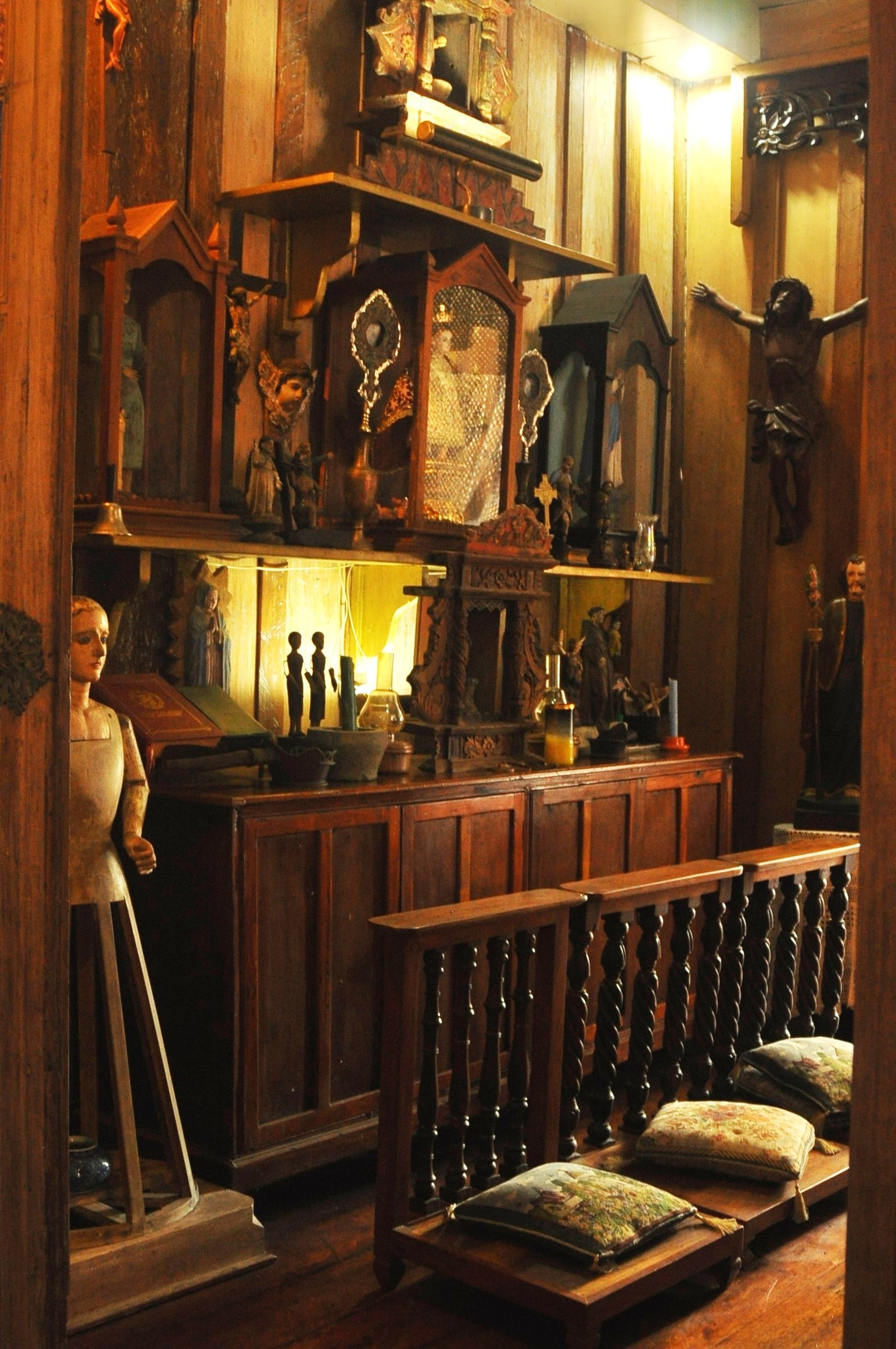The 1865 house is a richly-adorned, well-preserved silent witness to the passing of the years when Iloilo was an established trading and commercial hub. Iloilo’s famous tourist guide Eugene Jamerlan gave a brief tour of the public spaces of the second floor. As most Filipino houses were built then, the major living areas of the family are found in the second floor. The ground floor is used for miscellaneous purposes, e.g. as garaje, servants’ quarters, or bodega. At the Balay na Bato, the ground floor is where one can find the office, the curio shop, and the weaving area.


One of the main attractions of the house is their chocolate eh cooked from cocoa beans harvested from the family farm. Guests may arrange for a merienda of chocolate eh served with various kinds of toasted bread to dip in. Tablea chocolate is sold per roll at the shop and has the right mixture of sugar so all one needs to do is to add water and milk. For an old-fashioned cooking experience, stir and beat the chocolate mixture in a chocolatera using a guava wood batidor.

The prosperous Camina family had maintained lovely family traditions and, in their recipes, the culinary ones of Iloilo as well. The charming and loquacious Mrs. Luth Camina and I went over the buffet table where it was laden with many age-old dishes. Set in the long, narrow dining room with a fourteen-foot ceiling, there was binuog, meat seasoned only with salt and traditionally served during the vesperas sang fiesta. Grilled bangus from the ponds of Barotac Viejo is also seasoned only with salt. That is, according to Mrs. Camina, no-fuss cooking. The to-die-for embutido is just the opposite as most embutidos go – the house version takes five hours of steaming and is served during the vesperas. Part of the menu are hinangop of diced carrots, kamatis, amargoso, and sibuyas; guyaran ceviche; onion and eggplant fritters, green shells sautéed in ginger; and panara, also known as the poor man’s empanada with its filling of bean sprouts instead of meat. There’s Mrs. C’s own invention for an unusual twist: a pasta flavored with guinamos and mango and drizzled with a sauce of gata, ginger and parsley. The lady of the house has put her palate-pleasing mark and added to the family tradition.

If there’s anyone to thank for opening the house to the public, it’s Mr. Jamerlan. It took our tour guide five years of cajoling before the Caminas agreed to make their ancestral house accessible to those with a love for history and culture. Today, the Balay na Bato is a must-visit tourist attraction in Villa and offers the experience of observing how patadyong patterns unfold as the threads combine in the loom (patadyongs are also sold at the shop); shopping for unique tribal clothing articles handmade by the Panay Bukidnon; sitting down to a leisurely snack of rounds of hot, thick chocolate served as they used to in demitasses; and reminisce of an age when people took time to labor over a stove for an hour to make chocolate eh because it was the proper thing to do.


